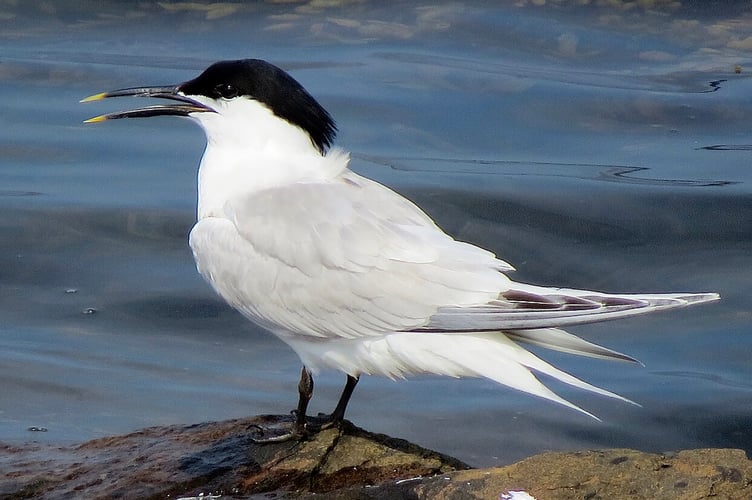As the year winds down and the hours of daylight diminish rapidly, additions to the Tice’s Meadow bird list become few and far between.
Only three in October, Spotted Red Shank, Sandwich Tern and the Hawfinch with the latter being the most interesting because of its appearance.
It is a large finch with brown and chestnut plumage, a very short tail and a fearsome steel blue bill.
There are probably only about a thousand breeding pairs in the UK and are mainly found in ancient woodland areas like the New Forest and Forest of Dean. They feed on hard seeds from trees, along with fruit seeds, which is where the strong, powerful beak comes in.

Thanks to strong cheek muscles and a huge beak, the bird can exert a pressure of up to 150 Ib. per square inch, making cracking cherry stones a piece of cake.
The Tice’s birds, which were part of a limited migratory pattern with birds moving into the UK from mainland Europe, were spotted by top twitcher Richard Horton.
The Spotted Redshank is an elegant wader with a long, needle like bill, perfect for probing in mud. It is an annual but uncommon passage migrant and a scarce winter visitor, as we’re at the northern edge of its winter range, which lies principally in the Mediterranean basin.
Our bird was almost certainly on passage as most wintering birds are found in coastal regions. The BTO reports, with a high degree of precision, that 68 birds over wintered last year.
Sandwich Terns are summer visitors, nesting in coastal colonies from the Isles of Scilly to Orkney. Like all Terns they are ground nesters, a high risk strategy given the nest predation by gulls and mammals likes foxes and rats.

The current estimate is there are about 14,000 pairs in the country during the summer, a few of which overwinter, but most migrate to the West African coast and I suspect the Tice’s bird to be one of these.
In addition to these records of isolated birds, October saw a large influx of Redwings from Scandinavia and Russia. Redwings are slightly smaller than their cousin the Song Thrush, have a prominent white eyestripe and an obvious red patch of plumage under their wings, which is best detected when they are flying. Gregarious but somewhat shy, they can be seen in flocks of 50-100 individuals.
About 750,000 winter in this country, leaving for their breeding grounds from mid March onwards, but a few pairs stay to breed in England and Scotland.
The news on the grapevine is that regal recognition is just around the corner but that monumental management changes are coming – I hope to be forthcoming next month.
Finally a piece of good news, the film Our Meadow, directed by local film maker, Josh Goyan which had its premiere at the Maltings in September, won first prize at the prestigious Namur International Film Festival in October. Well done Josh.







Comments
This article has no comments yet. Be the first to leave a comment.